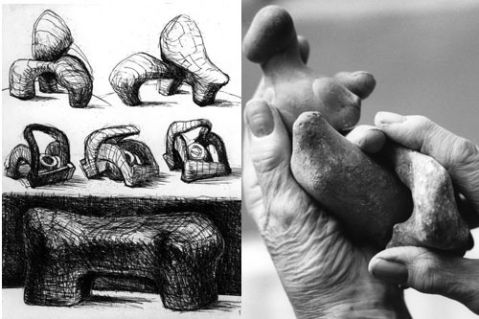Kathleen Watkins and St Ives.
What a weekend! Went to St Ives, Cornwall, to leave in a new sculpture for the spring exhibition at the Penwith Galleries (the gallery of the Penwith Society of Arts). This gallery is very important to me because of its history, having been created by Ben Nicholson, Barbara Hepworth and other radical artists of the time, in a breakaway movement from the St Ives Society of Arts. Even today it has a Hepworth at the entrance. To top this I had my first long conversation with Kathleen Watkins, the Curator, who has been with the Penwith since the days of Hepworth and Nicholson, and went drinking with them in the ‘local’ at a time, as she says, when artists got together in this way. Her name is there in the history books, and as far as I can see her knowledge of the St Ives artists of the 1940-60s is an untapped historical document in itself. I liked her witty put down of historical writings on the St Ives artists, and the St Ives movement – a catalogue of inaccuracies, in particular at a personal level.
She spoke of a different era, in a sense, of artists who designed and sent their own Christmas cards and of a St Ives that had not yet succumbed to ‘tourist destination’ status. (The lack of sales in the art market? “People don’t come to St Ives to buy expensive art. They come for a holiday”).
I spoke to her of my recent discovery of Wilhelmina Barnes-Graham, and she was immediately able to offer some examples of her prints, right there in the gallery, lying around! Called ‘Willie’, Barnes-Graham was one of the artists who came to St Ives from elsewhere and became part of British Modernism (see attached image). I spoke of her because I’d recently seen references to a couple of exhibitions of her work and was just amazed at the work, in particular the drawings.
Then in the hotel I was staying at I came across an artist from Sweden, Asa Ardin Keyja. She was travelling around, and it interested me to find that she had the same experience as me with finding pieces of stone on isolated walks that were sculptures in themselves. Having just been thinking about this issue, I was startled to find that it is, it seems, a commonplace experience among artists – well, certain types of artists. (Presumably ‘installation artists’ don’t quite see things in the same terms (Do you?)).










